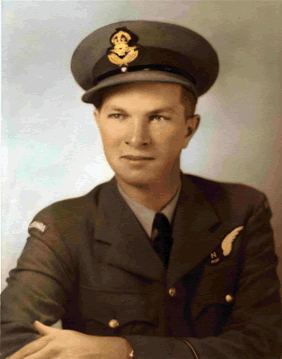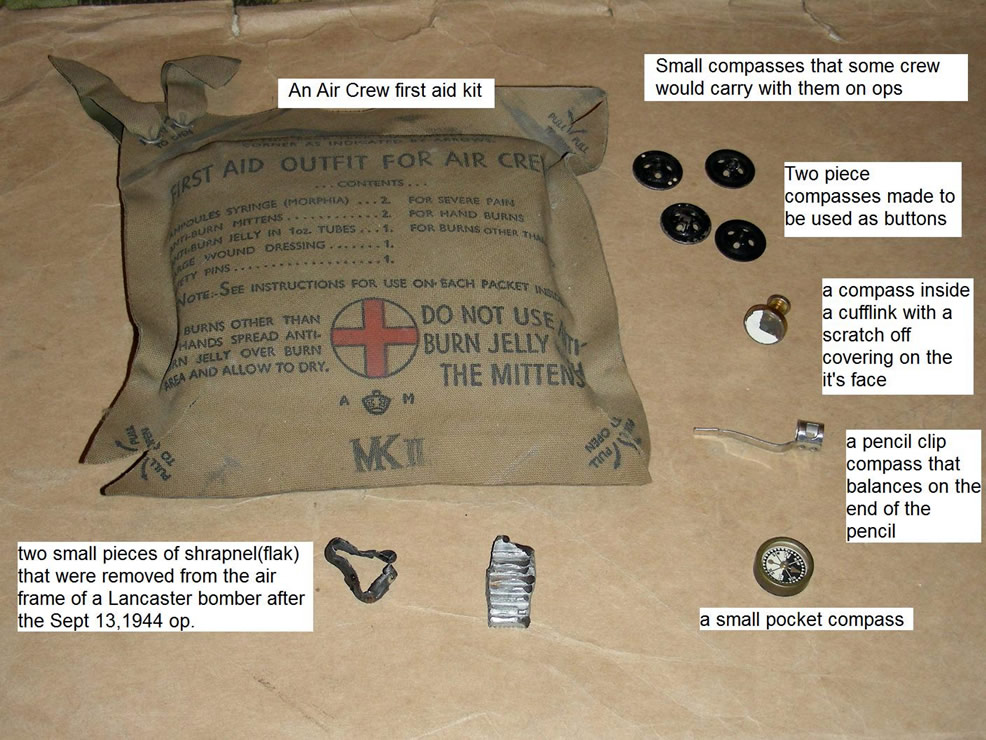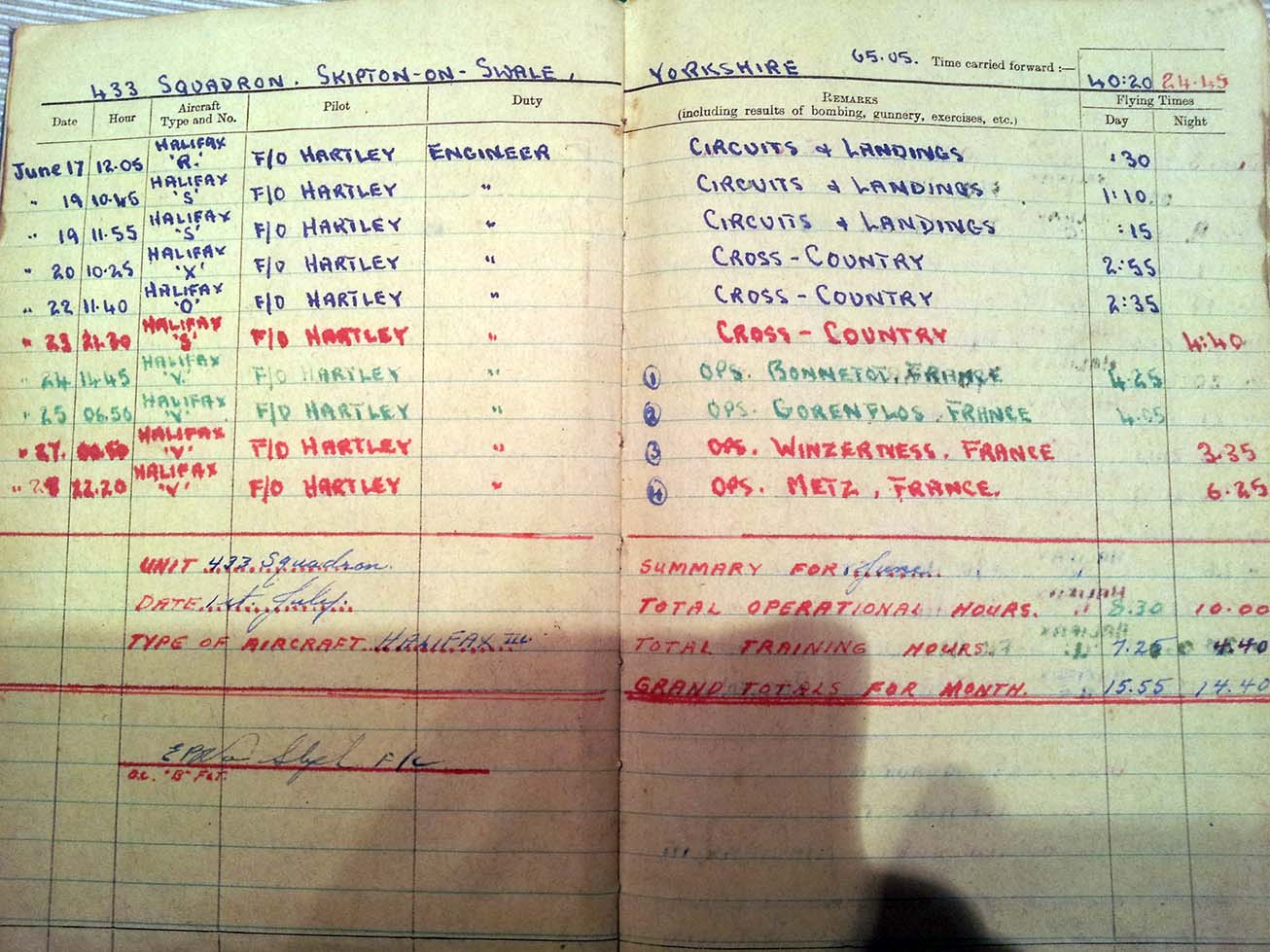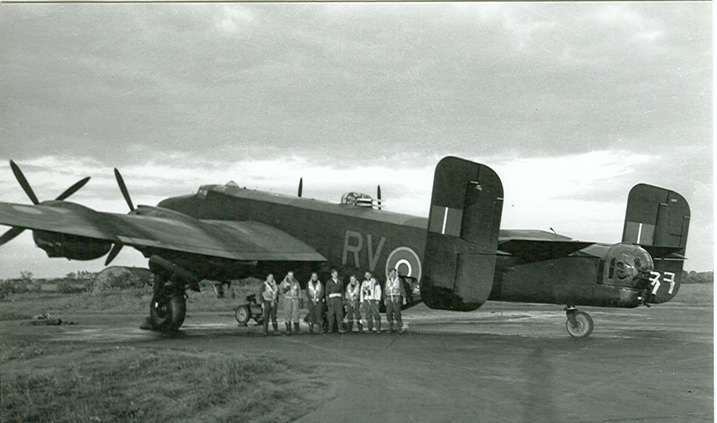Jim Hartley Crew - Squadrons 433 and 405 - Page 1
 |
Introduction
The following information was compiled by the children of Jack Dennis: Maureen Anderson, Darryl Dennis, and Wanda Metz.
"Our father, John (Jack) Edward Dennis served as a navigator in the RCAF in the Second World War. He began his service in the 433 squadron and later transferred to the 405. On very rare occasions, Dad shared a few of his WWII memories with family and friends. We have attempted to make a compilation of these verbal accounts and of the memories that Carlyle Chevalier, a member of Dad’s flight crew, shared with us. As many of these memories are from second hand sources and because time tends to distort memory, we cannot be sure that everything written here is accurate." |
Navigator Jack Dennis
Jim Hartley Crew |
|
| In the early part of the war, before the advent and implementation of radar to help guide the aircraft, navigation was done totally by visual sightings and manual calculations using charts and tables. The system was far from perfect. Determining an exact location took some time to do after a star or sun sighting was made. Consequently, the navigator could say with some certainty where he had been a couple of minutes ago when he took the sighting, but had to extrapolate his current position by taking other factors into consideration. The exact wind speed and direction was often unknown at various altitudes. A combination of factors such as fog, cloud conditions, the darkness of night missions, and the air speed and heading of the plane itself, made it difficult, if not impossible, to positively locate and hit targets. The introduction of onboard radar sets helped a great deal. Dad said that he always carried a lot of pencils so that, if the lead broke, he would have a back up. Apparently a simple pencil, necessary for vital calculations, was a crucial navigational tool during the Second World War. |
|

|
|
The Crew
The image above was taken in Feb - Mar 1944 at 24 OTU Honeybourne, and shows the crew in front of their Whitley bomber. The identifications are provided by Carlyle Chevalier. Note the crew's felt boots.To read more about the northern Group 6 bases, click here. |
 |
Our family has a number of small compasses that Dad kept. The compasses were incorporated into uniforms or other commonly used items. Dad had compasses disguised as buttons, cufflinks and part of a pen. We remember him saying that they were kind of a gimmick and probably would never have been used. The idea was that if you got shot down behind enemy lines you may have wanted a compass to help you find your way around. |
The image above provided courtesy of the family of Navigator Jack Dennis. Scroll right to read about the compass collection.
Carlyle wrote that Dad did basic navigating well. They bombed on radar when there was 100% cloud. He said that their duties in the P.F.F. included dropping flares for other bombers and dropping blockbuster bombs.
Dad mentioned that a day or so before one of his bombing raids (this must have been in the 433 squadron), a group of bombers dropped their bombs in the wrong place and those who were on that team were severely reprimanded. Dad was glad they hadn’t been on that mission. At that time they were bombing close to allied forces and they had to be sure to drop the bombs accurately or they could bomb their own troops. He said they were always extremely careful about where they dropped their bombs or flares.
Every Canadian flight crew had to have at least one British member. At times, this was a cause for some animosity.
Dad always took a pair of shoes with him on the flights. If they were forced down in enemy territory, he didn’t want to be stuck walking a long way in his felt flight boots. When this was mentioned to Carlyle, he said that he had done the same thing, but hadn’t realized that Jack had done it too. Carlyle added that if it had been necessary to bail out, the jolt of the parachute could have sent his loose fitting flying boots on ahead of him and he wasn’t about to roam around Europe in his stocking feet. Years later another crew member kidded him about it - on all of those flights he hadn’t realized why Carlyle (& Jack) had taken their shoes with them.
Carlyle recalled that most of the crew smoked in the plane and that he, being a non-smoker, hadn’t liked it. He felt that smoking could have ignited an explosion at any time. One night at dusk, while flying over the channel, their gunners saw a bomber self destruct in mid air. All four engines were torn off the wings of an aircraft as it dropped into the channel. As there was speculation that a cigarette may have caused the crash, no one ever smoked in their plane again.
|

The log book extract shows the Hartley crew training runs and their ops over France. This image was provided courtesy of Jonathan Williams, the grandson of Bill (Taffy) Williams. Johnathan writes "My Father Richard and Auntie Susan were thrilled to see the 2 pictures of their father[Bill(Taffy) Williams]. The one resting up against the bunker and the other while he is reading. We even matched up the Ops that Jim Hartley took part in on the 19th of June 1944 and then the Op to Winzerness and Metz on the 27th and 28 respectively, and his Log book is predominately flying under the pilot of Jim [Hartley]." |
|
Jim Hartley Crew - Squadrons 433 and 405 - Page 1




